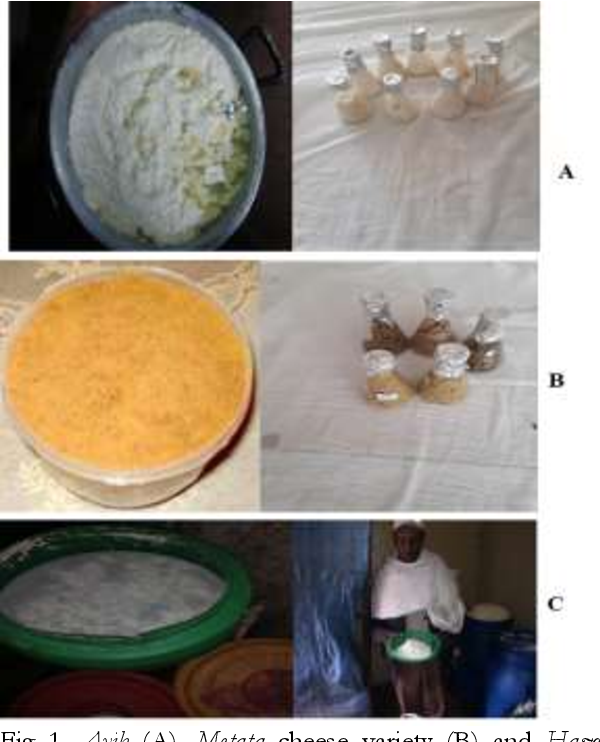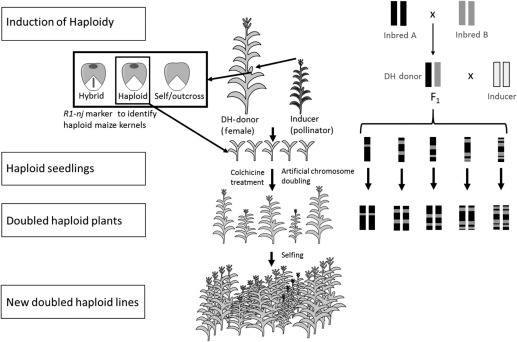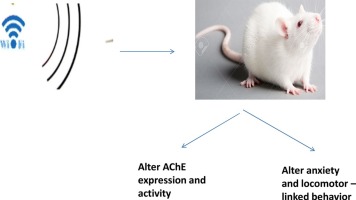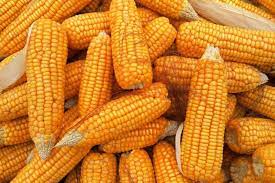Potential and Prospects of Utilization, Development, and Conservation of Wild Edible Plants of the Meinit Ethnic Community in Bench-Maji Zone, Southwestern Ethiopia
Downloads
Background: Meinit sociocultural community widely use wild plants for food, medicine, and income generation. However, the diversity of wild edible plants is declining drastically, and the indigenous knowledge on their preservation and utilization is disappearing.
Objective: The study was conducted to document the available knowledge on wild edible plant species (WEPS) used by the Meinit socio-cultural community of Southwestern Ethiopia.
Material and Methods: An ethnobotanical study was conducted on the use of WEPS by Meinit community in Bench-Maji Zone, Southwestern Ethiopia, from May 2019 to March 2021. Individual interviews were conducted using a semi-structured interview questionnaire and focus group discussions. A total of 198 participants aged between 18 and 70 years were drawn from the community and interviewed. Descriptive statistics were used to analyze the data.
Results: A total of 66 wild edible plants were recorded, which belong to 34 families and 50 genera. The genus Asteraceae and Fabaceae contributed six species each, followed by Amaranthaceae and Moraceae, each of which contributed five species. Of these species, 28 are herbs, 14 are shrubs, 13 are climbers, and 11 are trees. Leaves (42), fruits (19), roots and tubers (5), seeds (3) and aerial parts (2) of the WEPS were found to be used for food. From the documented WEPS, 12 species were identified to have medicinal values, and one has a market value. The WEPS are consumed as raw, boiled, and local beverage. The anthropogenic factors are major potential threats to WEPS and associated knowledge.
Conclusions: It is concluded that a high diversity of WEPS exists in the study districts, and the identified plant resources are used by the community mainly for food, medicine, and income generation. The tesults imply that WEPS can play significant roles in dietary diversity, food security, and health of rural households if they are conserved and used for food and medicine and further developed and improved. Therefore, these plant species should be domesticated, and their nutritional, phytochemical, and toxicological properties studied for enhanced use and conservation.
Abbink, J. 1993. Me’en ritual, medicinal and other plants: A contribution to South-West Ethiopian ethno-botany. Journal of Ethiopian Studies, 26(2): 1–21.
Alexiades, M.N. 1996. Collecting ethnobotanical data: An introduction to basic concepts and techniques. Advances in Economic Botany, 10: 53–94. Azene Bekele, Birnie, A. and Tengnas, B. 1993. Useful trees and shrubs for Ethiopia: Identification, Propagation and Management for Agricultural and Pastoral Communitie. Regional Soil Conservation, Swedish International Development Authority. Pp. 1–486. Badimo, D., Lepetu, J. and Demel Teketay. 2015. Utilization of edible wild plants and their contribution to household income in Gweta Village, central Botswana. Africa Journal of Food Science Technology, 6(7): 220–228.
Bernard R.H. 2002. Research methods in anthropology-qualitative and quantitative approaches. AltaMira Press, Lanham, USA. Pp.109–522. Billong Fils, P.E., Afiong Nana, N., Betti, J.L., Farick Njimbam, O. and Tientcheu Womeni, S. 2020. Ethnobotanical survey of wild edible plants used by Baka people in southeastern Cameroon. Journal of Ethnobiology and Ethnomedicine, 16(1):1–15.
Cotton, C.M. and Wilkie, P. 1996. Ethnobotany: Principles and applications. John Wiley and Sons, Chichester, UK. Pp. 424.
Derebe Alemneh. 2020. Ethnobotany of wild edible plants in Yilmana Densa and Quarit Districts of West Gojjam Zone, Northwest Ethiopia. Ethnobotany Research and Applications, 20: 1–14.
Edwards, S., Mesfin Tadesse and Hedberg, I. 1995. Canellaceae to euphorbiaceae. Flora of Ethiopia and Eritrea, Volume 2, Part 2. The National Herbarium, Addis Ababa University, Addis Ababa, Ethiopia. Pp.1–437.
Edwards, S., Sebsebe Desmissew and Hedberg I. 1997. Hydrocharitaceae to Arecaceae. Flora of Ethiopia and Eritrea, Volume 6. The National Herbarium, Addis Ababa University, Addis Ababa, Ethiopia. Pp. 1–566.
Edwards, S., Mesfin Tadessese, Sebsebe Demissew and Hedberg, I. 2000. Magnoliaceae to facourtiaceae. Flora of Ethiopia and Eritrea, Volume 2, Part 1. The National Herbarium, Addis Ababa University, Addis Ababa, Ethiopia. Pp. 1–463.
Edwards, S., Sileshi Nemomissa and Hedberg, I. 2003. Apiaceae to Dipsacaceae. Flora of Ethiopia and Eritrea, Volume 4, Part 1. The National Herbarium, Addis Ababa University, Addis Ababa, Ethiopia. Pp. 1–331.
Ermias Lulekal, Zemede Asfaw, Ensermu Kelbessa and Van Damme, P. 2011. Wild edible plants in Ethiopia: A review on their potential to combat food insecurity. Afrika Focus, 24(2): 71–121.
Fentahun Mengistu and Hager, H. 2009. Wild edible fruit species cultural domain, informant species competence and preference in three districts of Amhara region, Ethiopia. Ethnobotany Research and Applications, 6: 487–502.
Flyman, M.V. and Afolayan, A.J. 2006. The suitability of wild vegetables for alleviating human dietary deficiencies. South African Journal of Botany, 72(4): 492–497.
Getachew Addis, Kelbessa Urga and Dawit Dikasso. 2005. Ethnobotanical study of edible wild plants in some selected districts of Ethiopia. Human Ecology, 33(1): 83–118.
Getachew Addis, Zemede Asfaw and Zerihun Woldu. 2013. The role of wild and semi-wild edible plants to household food sovereignty in Hamar and Konso communities, South Ethiopia. Ethnobotany Research and Applications, 11: 121–141.
Getachew Amare and Bizuayehu Desta. 2021. Ximenia americana: Economic importance, medicinal value, and current status in Ethiopia. The Scientific World Journal, 8880021. https://doi.org/10.1155/2021/8880021.
Hedberg, I. and Edwards, S. 1989. Pittosoraceae to Araliaceae. Flora of Ethiopia and Eritrea, Volume 3. The National Herbarium, Addis Ababa University, Addis Ababa, Ethiopia. Pp. 1–657.
Hedberg, I., Ensermu Kelbessa, Edwards, S., Sebessebe Demissew and Persson, E. 2006. Plantaginaceae. In: Hedberg, I., Ensermu Kelbessa, Edwards, S., Sebessebe Demissew and Persson, E. (eds.). Flora of Ethiopia and Eritrea, Volume 5. The National Herbarium. Addis Ababa University, Addis Ababa, Ethiopia.
Kebu Balemie and Fassil Kebebew. 2006. Ethnobotanical study of wild edible plants in Derashe and Kucha Districts, South Ethiopia. Journal of Ethnobiology and Ethnomedicine, 2(1): 1–9.
Leul Kidane and Alemu Kejela. 2021. Food security and environment conservation through sustainable use of wild and semi-wild edible plants: A case study in Berek Natural Forest, Oromia special zone, Ethiopia. Agriculture and Food Security, 10(1): 1–16.
Martin, P.J. 1995. Sounds and society: Themes in the sociology of music. Manchester University Press, UK. Pp. 1–263.
Mekuanent Tebkew, Yohannis Gebremariam, Tadesse Mucheye, Asmamaw Alemu, Amsalu Abich, et al. 2018. Uses of wild edible plants in Quara district, northwest Ethiopia: implication for forest management. Agriculture and Food Security, 7(1): 1–14. Merkuz Abera and Kindye Belay. 2022. Ethnobotanical study of wild edible plants and their indigenous knowledge in Sedie Muja District, South Gondar Zone, Northwestern Ethiopia. American Journal of Plant Sciences, 13(2): 241–264.
Mesfin Tadesse. 2004. Asteraceae. In: Hedberg, I., Friis, I. and Edwards, S. (eds.). Flora of Ethiopia and Eritrea, Volume 4, Part 2. The National Herbarium. Addis Ababa University, Addis Ababa, Ethiopia.
Mirutse Giday, Zemede Asfaw and Zerihun Woldu. 2009. Medicinal plants of the Meinit ethnic group of Ethiopia: an ethnobotanical study. Journal of Ethnopharmacology, 124(3): 513–521.
Mutie, F.M., Rono, P.C., Kathambi, V., Hu, G.-W. and Wang, Q.-F. 2020. Conservation of wild food plants and their potential for combatting food insecurity in Kenya as exemplified by the Drylands of Kitui County. Plants, 9(8): 1017.
Niguse Hotessa and Jedala Robe. 2020. Ethiopian Indigenous traditional fermented beverage: The role of the microorganisms to ward nutritional and safety value of fermented beverage. International Journal of Microbiology, 8891259. https://doi.org/10.1155/2020/8891259.
Nyakoojo, C. and Tugume, P. 2020. Traditional use of wild edible plants in the communities adjacent Mabira Central Forest Reserve, Uganda. Ethnobotany Research and Applications, 20: 1–14.
Ojelel, S. and Kakudidi, E.K. 2015. Wild edible plant species utilized by a subsistence farming community in Obalanga sub-county, Amuria district, Uganda. Journal of Ethnobiology and Ethnomedicine, 11(7). https://doi.org/10.1186/1746-4269-11-7.
Ojelel, S., Mucunguzi, P., Katuura, E., Kakudidi, E.K., Namaganda, M. and Kalema, J. 2019. Wild edible plants used by communities in and around selected forest reserves of Teso-Karamoja region, Uganda. Journal of Ethnobiology and Ethnomedicine, 15(1): 1–14.
Pawera, L., Khomsan, A., Zuhud, E., Hunter, D., Ickowitz, A., et al. 2020. Wild food plants and trends in their use: From knowledge and perceptions to drivers of change in West Sumatra, Indonesia. Foods, 9(9): 1240. https://doi.org/10.3390/foods9091240.
Sebsebe Demissew, Friis, I. and Weber, O. 2021. Diversity and endemism of the flora of Ethiopia and Eritrea: state of knowledge and future perspectives. Rendiconti Lincei. Scienze Fisichee Naturali, 32: 675–697.
Shumsky, S.A., Hickey, G.M., Pelletier, B. and Johns, T. 2014. Understanding the contribution of wild edible plants to rural social-ecological resilience in semi-arid Kenya. Ecology Society, 19(4): 34. http://dx.doi.org/10.5751/ES-06924-190434. Singh, N., Pandey, R., Chandraker, S. K., Pandey, S., Malik, S. and Patel, D. 2022. Use of wild edible plants can meet the needs of future generation. Pp. 341–366. In: Kumar, P., Tomar, R.S., Bhat, J.A., Dobriyal, M. and Rani, M. (eds.). Agro-biodiversity and Agri-ecosystem Management. Springer Nature, Singapore. https://doi.org/10.1007/978-981-19-0928-3_18.
Tariku Berihun and Eyayu Molla. 2017. Study on the diversity and use of wild edible plants in Bullen District Northwest Ethiopia. Journal of Botany, 8383468. https://doi.org/10.1155/2017/8383468.
Termote, C., Van Damme, P. and Dhed’a Djailo, B. 2010. Eating from the wild: Turumbu indigenous knowledge on noncultivated edible plants, Tshopo District, DRCongo. Ecology of Food and Nutrition, 49(3): 173–207.
Tilahun Teklehaymanot and Miruse Giday. 2010. Ethnobotanical study of wild edible plants of Kara and Kwego semi-pastoralist people in Lower Omo River Valley, Debub Omo Zone, Ethiopia. Journal of Ethnobiology and Ethnomedicine, 6(1): 1–8.
Tinsae Bahru, Zemede Asfaw and Sebsebe Demissew. 2014. Wild edible plants: sustainable use and management by indigenous communities in and the buffer area of Awash National Park, Ethiopia. Ethiopian Journal of Science, 36(2): 93–108.
Turreira‐García, N., Theilade, I., Meilby, H. and Sørensen, M. 2015. Wild edible plant knowledge, distribution and transmission: A case study of the Achí Mayans of Guatemala. Journal of Ethnobiology and Ethnomedicine, 11: 52. https://doi.org/10.1186/s13002-015-0024-4. Yemisrach Fikadu, Estifanos Ele and Chandravanshi, B.S. 2022. Chemical composition and antioxidant activities of the essential oils of Lippia adoensis Hochst ex. Walp and Ocimum sanctum Linn. Bulletin of the Chemical Society of Ethiopia, 36(1): 95–108.
Yigremachew Seyoum, Demel Teketay, Girma Shumi and Melaku Wodafirash. 2015. Edible wild fruit trees and shrubs and their socioeconomic significance in central Ethiopia. Ethnobotany Research and Applications, 14: 183–197.
Copyright (c) 2023 Abebe Yimer, Sirawdink Fikereyesus Forsido, Getachew Addis, Abebe Ayelign

This work is licensed under a Creative Commons Attribution-NoDerivatives 4.0 International License.
- I am authorized by my co-authors to enter into these arrangements.
- I warrant, on behalf of myself and my co-authors, that:
- the article is original, has not been formally published in any other peer-reviewed journal, is not under consideration by any other journal and does not infringe any existing copyright or any other third party rights;
- I am/we are the sole author(s) of the article and have full authority to enter into this agreement and in granting rights to Springer are not in breach of any other obligation;
- the article contains nothing that is unlawful, libellous, or which would, if published, constitute a breach of contract or of confidence or of commitment given to secrecy;
- I/we have taken due care to ensure the integrity of the article. To my/our - and currently accepted scientific - knowledge all statements contained in it purporting to be facts are true and any formula or instruction contained in the article will not, if followed accurately, cause any injury, illness or damage to the user.
- I, and all co-authors, agree that the article, if editorially accepted for publication, shall be licensed under the Creative Commons Attribution License 4.0. If the law requires that the article be published in the public domain, I/we will notify Springer at the time of submission, and in such cases the article shall be released under the Creative Commons 1.0 Public Domain Dedication waiver. For the avoidance of doubt it is stated that sections 1 and 2 of this license agreement shall apply and prevail regardless of whether the article is published under Creative Commons Attribution License 4.0 or the Creative Commons 1.0 Public Domain Dedication waiver.
- I, and all co-authors, agree that, if the article is editorially accepted for publication in Haramaya Journals, data included in the article shall be made available under the Creative Commons 1.0 Public Domain Dedication waiver, unless otherwise stated. For the avoidance of doubt it is stated that sections 1, 2, and 3 of this license agreement shall apply and prevail.












